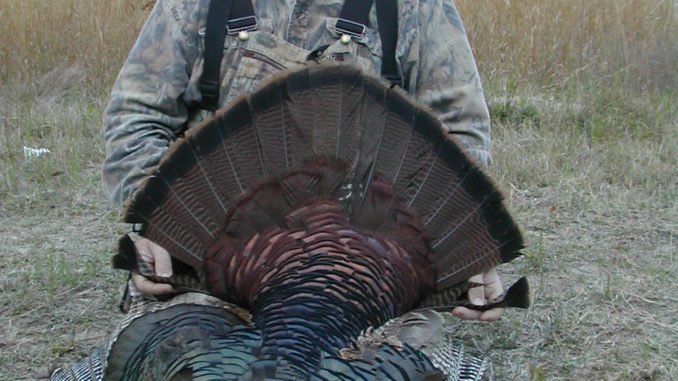
Hunters take well over 13,000 gobblers in 2010 spring season
North Carolina hunters killed a record 13,756 wild turkeys during the 2010 spring season.
The biologist who oversees the state’s wild-turkey project, said turkeys moving into new areas and more hunters likely accounted for the increase.
“We still have areas of the state where turkey ranges are expanding and that probably accounts for some of the increase,” said Evin Stanford of the N.C. Wildlife Resources Commission. “Plus, we conduct a hunter harvest survey each three years, and it indicates we’re recruiting more turkey hunters now, particularly at the coastal plain.”
The 2010 harvest eclipsed the previous record harvest, 12,579 in 2009, by 1,177 birds, an 8.6 percent increase.
For the second straight season, several counties broke through the 400-turkey barrier as Northampton Co. led the state with 465 gobblers tagged, followed by Halifax and Rockingham, which each tallied 432 birds. Wilkes County placed fourth with 384 turkeys, followed by Stokes with 368, Rutherford with 333, Caswell with 323, Rowan with 321, Burke with 267 and Bladen with 264.
The Pisgah Game Lands, which covers almost a half-million acres in the western mountains, led public-lands gobbler harvests with 255, followed by the Nantahala Game Lands, which also encompassing nearly a half-million acres, with 168 birds. The Uwharrie Game Lands, spreading over 50,000 acres in Davidson, Randolph and Montgomery counties, placed third with 50 tagged turkeys. Croatan National Forest was fourth with 37 turkey kills, followed by the Roanoke River Wetlands and National Wildlife Refuge Game Lands with 36 birds. Caswell’s R. Wayne Bailey Game Lands was sixth with 29 turkeys followed by South Mountains Game Land (27) and Butner-Falls of the Neuse (25). The Green River Game Lands placed ninth with 23 gobbler kills followed by the Alcoa Game Lands near the southern Yadkin River drainage with 19 birds.
Gun kills accounted for 13,546 turkeys while archery hunters bagged 210 statewide.
Can North Carolina sustain ever-increasing harvests, even though spring and summer brood surveys show declining numbers of young turkeys surviving to adulthood?
Stanford dismissed the theory that there are so many juvenile, non-breeding hens in the population that they skew the numbers and make it seem that hens aren’t reproducing successfully.
“Some people are seeing 1-year-old birds that aren’t nesting and say that’s bringing down the overall ratio (of hens with poults),” said Stanford, who believes the hens-with-poults ration to hens-without-poults ratio remains fairly constant.
“That’s something we can’t account for in the surveys, but it’s been happening all along. If there’s more young hens out there, there’s also more adult hens, so the numbers (of poults) shouldn’t be affected that much, even if the ratio appears to be dropping. With the young female turkey, this issue has always been the case, even with lower densities of turkeys.
“We may have more adult hens that are having successful broods, so that’s why (N.C.) harvests have remained high.”
Stanford also said some of the alarm about dropping poult recruitment could have been caused by setting early thresholds too high.
“Everyone started doing surveys during periods of restoration when turkeys moved into new areas and there was little competition and maybe high productivity,” he said. “Maybe now we’re returning to a state of normalcy. But it’s hard to say exactly what’s causing (low brood numbers).”
However, Stanford said southeastern states turkey biologists met recently to talk about declining numbers, which apparently are occurring across the region.
“Brood surveys (at other states) historically act like ours,” he said. “Starting out (in the 1970s), we had low numbers, (we) rebuilt the numbers, then hit a high and, after a number of years, the population starts going down — and so does the harvest. It’s just one of those things that happens over time. It happens when you have more people and start losing (turkey) habitat.”
Stanford said North Carolina will see a decline in wild turkey numbers and harvests at some point, even though he can predict when.
“It’ll happen for sure over time,” he said, “because we’re losing habitat across the state. But whether it’ll start in five, 20 or 50 years is unknown.
“We do have some areas of the state where the harvest already is down, particularly the northwestern piedmont. People started complaining about it, and that’s one of the reasons we ended the winter either-sex season after only a few years.”
But Stanford said he didn’t foresee a drop in turkey harvests in the near future.
“I feel like we will continue to see high harvests over the next few years.” he said.




Be the first to comment